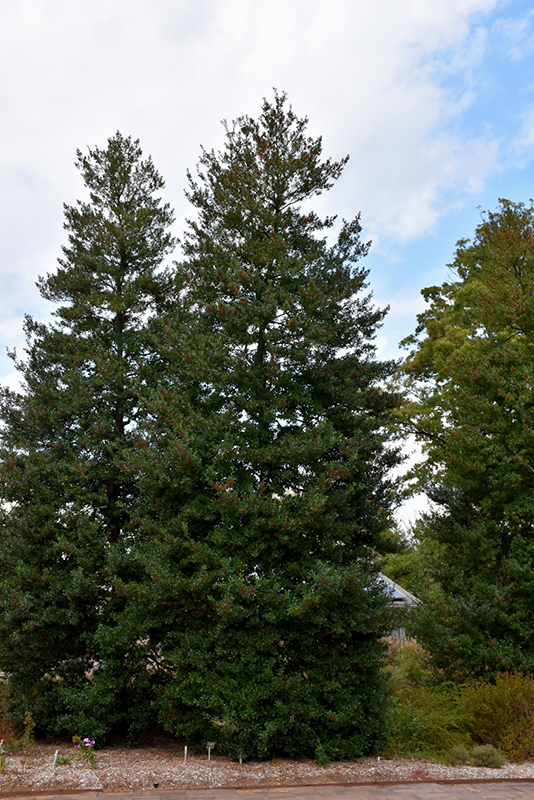$-$BeginNetPS$-$
$-$EndNetPS$-$
Foster No. 2 Holly
Ilex x attenuata 'Foster No. 2'
Height: 20 feet
Spread: 10 feet
Sunlight:
![]()
![]()
Hardiness Zone: 5b
Description:
Pyramidal broadleaf evergreen tree-holly with dark green foliage and an abundance of showy red berries in winter; attracts cedar waxwings and other birds
Ornamental Features
Foster No. 2 Holly is primarily grown for its highly ornamental fruit. It features an abundance of magnificent red berries from mid fall to late winter. It has attractive dark green evergreen foliage. The spiny pointy leaves are highly ornamental and remain dark green throughout the winter.
Landscape Attributes
Foster No. 2 Holly is a dense multi-stemmed evergreen tree with a distinctive and refined pyramidal form. Its average texture blends into the landscape, but can be balanced by one or two finer or coarser trees or shrubs for an effective composition.
This is a relatively low maintenance tree, and is best pruned in late winter once the threat of extreme cold has passed. It is a good choice for attracting birds and bees to your yard. It has no significant negative characteristics.
Foster No. 2 Holly is recommended for the following landscape applications;
- Accent
- Mass Planting
- Hedges/Screening
- General Garden Use
Planting & Growing
Foster No. 2 Holly will grow to be about 20 feet tall at maturity, with a spread of 10 feet. It has a low canopy with a typical clearance of 2 feet from the ground, and is suitable for planting under power lines. It grows at a medium rate, and under ideal conditions can be expected to live for 40 years or more.
This tree does best in full sun to partial shade. It requires an evenly moist well-drained soil for optimal growth. It is very fussy about its soil conditions and must have rich, acidic soils to ensure success, and is subject to chlorosis (yellowing) of the foliage in alkaline soils. It is quite intolerant of urban pollution, therefore inner city or urban streetside plantings are best avoided. Consider applying a thick mulch around the root zone in winter to protect it in exposed locations or colder microclimates. This particular variety is an interspecific hybrid.


